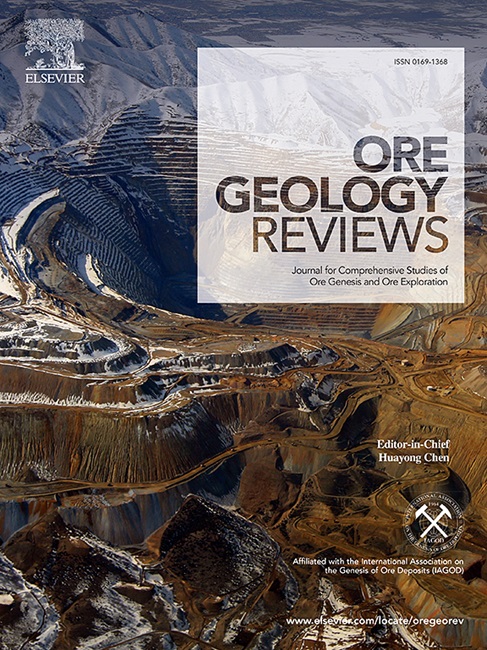District to mineral-scale geometry of the world-class Antino orogenic gold system, southeastern Suriname (Guiana shield)
IF 3.2
2区 地球科学
Q1 GEOLOGY
引用次数: 0
Abstract
The Antino-Yaou-Benzdorp gold district (Eastern Suriname), located within the Rhyacian-aged Marowijne Greenstone Belt of the Guiana Shield, hosts multiple gold deposits preferentially developed within intermediate intrusive bodies (intrusion-hosted orogenic gold) and at lithological boundaries (shear zone-hosted orogenic gold). A multi-scale approach, integrating district- to ore-mineral-scale observations is applied to assess the geometry and structural controls on gold mineralization. Within the district, the spatial distribution and orientation of gold camps, such as the Antino gold camp, are controlled by the TTG-complexes locations and shapes. These rigid bodies act as buttress for strain accumulation within the volcano-sedimentary sequence. At the deposit scale, zones of enhanced deformation are located at lithological contacts, along antiformal limbs, and along the edges of tonalitic intrusive bodies. These intrusions were preferential hosts for later brittle deformation and related brecciation/ veining. The first compressional stage D1, produced the ENE fabric, while the second stage, D2a, was responsible for the main folding event during ongoing compression under NE-SW-oriented shortening, and the formation of axial planar fabric S2a. NW-oriented dip-slip shear zones are related to the D2b deformation stage and host both metric fault-fill veins and progressively deformed tension vein arrays. Locally, a refolding of the S2b mylonitic foliation is observed (D3 deformation-stage). This progressive ductile deformation is then locally overprinted by a polyphase brittle deformation (D4) stage expressed by breccias, extensional veins and fractures. Strain axis orientations for shearing (NE-SW shortening) and refolding of mylonitic segments (NW-SE shortening) control the location of low-stress sites and, therefore, the location and orientation of gold ore shoots. At the mineral scale, micro X-ray fluorescence scanning on core samples reveals that early D2b veins act as ground preparation sites for later (D3 and D4-related) gold deposition, with boudin necks and folded mylonite hinges serving as low-stress zones for pyrrhotite and gold deposition. The D4-related brittle overprinting plays an important role in the total gold budget with remobilization and/or new gold inputs. Both shear zone-hosted, and tonalite intrusion-hosted systems demonstrate the importance of rheology in building an orogenic gold system. This study emphasizes the value of integrating multi-scale data for gold targeting, particularly through detailed vein analysis, which should be applied across the entire Guiana Shield.

求助全文
约1分钟内获得全文
求助全文
来源期刊

Ore Geology Reviews
地学-地质学
CiteScore
6.50
自引率
27.30%
发文量
546
审稿时长
22.9 weeks
期刊介绍:
Ore Geology Reviews aims to familiarize all earth scientists with recent advances in a number of interconnected disciplines related to the study of, and search for, ore deposits. The reviews range from brief to longer contributions, but the journal preferentially publishes manuscripts that fill the niche between the commonly shorter journal articles and the comprehensive book coverages, and thus has a special appeal to many authors and readers.
 求助内容:
求助内容: 应助结果提醒方式:
应助结果提醒方式:


